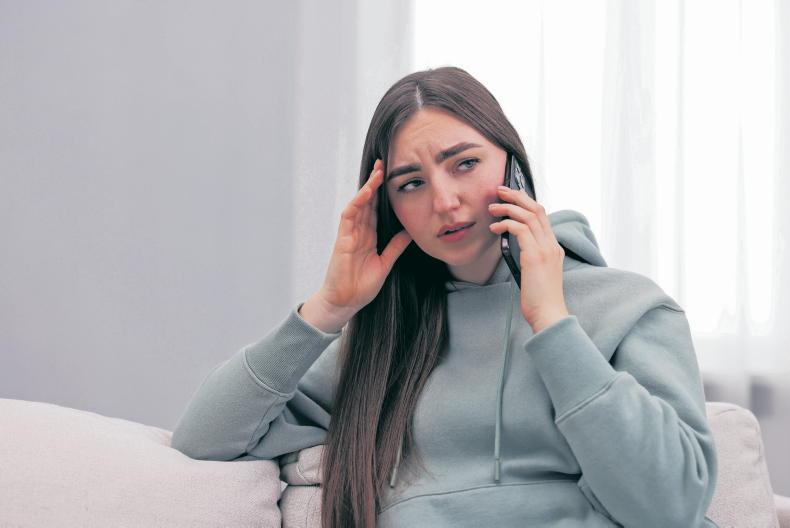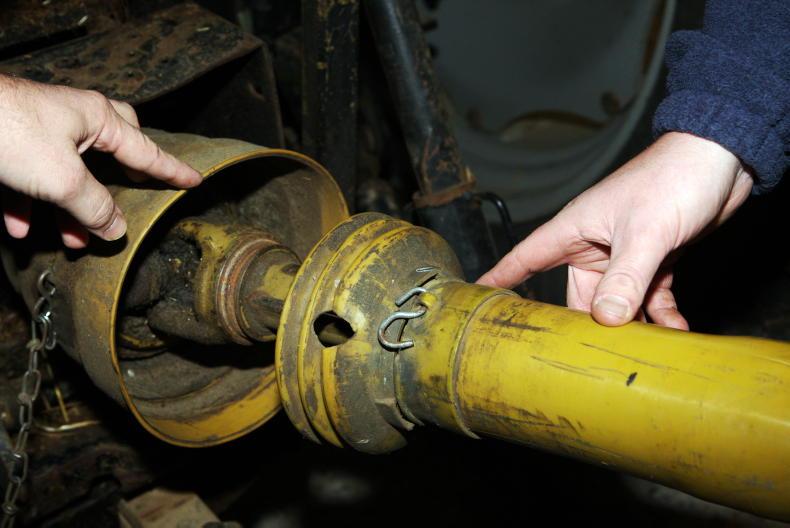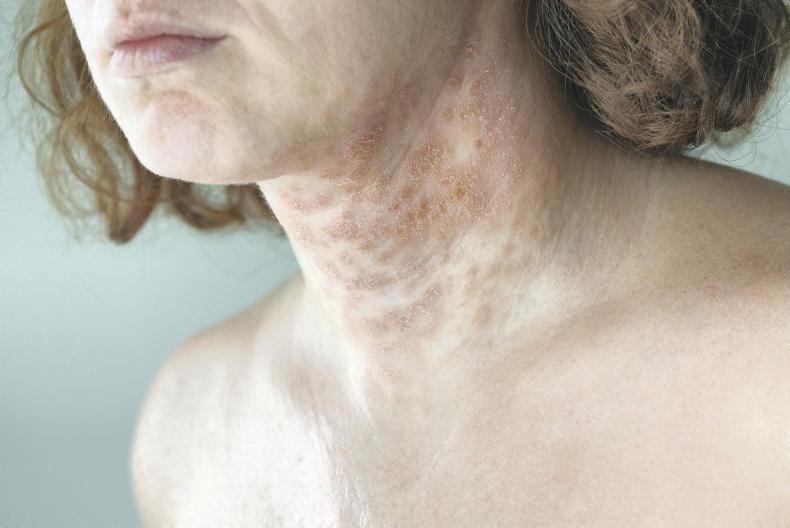“Glaucoma is the most common disease that affects the optic nerve, and probably the leading cause of irreversible blindness. The optic nerve looks after vision and transmits images to the brain to be recognised,” says Dr Graeme Rogers, consultant ophthalmic surgeon at the Beacon Hospital.
“Glaucoma is sometimes caused by fluid building up and increasing pressure inside the eye,” he says.

Dr Graeme Rogers, consultant ophthalmic surgeon at the Beacon Hospital
“Nerve changes occur then because of this relative fluid build-up and this leads, ultimately, to damage to the visual field.”
Many people are totally unaware that this condition is developing, he believes.
A major part of an optician’s role is picking up serious eye illness in the community
“Forty per cent of your optic nerve could actually be damaged before you notice any loss of vision,” he explains. “That’s why we are asking people to have regular check-ups, particularly after the age of 50.”
Local optometrists are well placed to do these check-ups.
“A major part of an optician’s role is picking up serious eye illness in the community,” Dr Rogers says.”It’s not just about them prescribing glasses (corrective lenses) of one type or another.”
The glaucoma check-up usually involves two types of tests to accompany the examination of the nerve: a pressure test (which involves a puff of air into the eye) and/or an optical coherence tomography (OCT) test. This is where an image of the optic nerve is scanned and analysed. If there is damage to the nerve, the person is referred to an eye specialist.
Shock at diagnosis
People presenting with glaucoma at a later stage can be quite shocked to find that they need treatment.
“Ironically it’s often those people who have excellent, uncorrected vision who are often picked up last,” Dr Rogers says. “[This is] because they are not in the habit of going to the optician.
“It can be devastating for them to learn that they may need invasive treatment.
When you analyse the optic nerve and their visual field, there may be already quite significant damage
“They will tell me they have always had excellent vision and they may or may not need glasses for reading. They don’t quite understand why they now have to be on treatment for a condition for which there are, seemingly, no symptoms.
“When you analyse the optic nerve and their visual field, there may be already quite significant damage.”
The call for a glaucoma specialist at that point is to try to extend the life of the optic nerve for the person.
“We do that by controlling the pressure, amongst other things, so that the rate of decline can be slowed and the person can continue seeing for the rest of their lives.”
Treatment depends on age
The invasiveness of the treatment and its management depends on the person’s age and general health.
“We would, for example, set a target pressure at a much lower level for a younger person with glaucoma in order to extend their optic life span as long as possible,” Dr Rogers says.
“With a more elderly person, we might be more conservative in our management because we can predict that their remaining vision will last for the rest of their lives.
“It’s about extending the life of the optic nerve and balancing treatment according to their quality of life.
“We do not want to provide treatment that seems worse to the person than the condition we are treating, so we make the decisions about the best way forward as a team – patient and doctor.”
Over 50s most at risk
Who is most at risk of glaucoma? Most people over the age of 50 would require a test every two years, Dr Rogers says, and once a year if they have the following risk factors:
Eye trauma (injury).Diabetes.Are very short sighted or very long sighted.Have had eye surgery.Have a family history of eye disease.“All people with these risk factors would require more frequent testing to rule out the condition so that treatment can be started earlier,” Dr Rogers says.
Types of glaucoma
While Dr Rogers also specialises in cataract and retinal surgery, he is predominantly a glaucoma specialist and regards glaucoma as a discipline all on its own.
“Glaucoma is often thought of as a single entity, but I consider that there are more than 50 types of glaucoma and, possibly, as many as 80 – all treated differently,” he says.
The two most common forms of glaucoma in Ireland are primary open-angle glaucoma and normal-tension glaucoma, while angle closure glaucoma is not as common.
Even though both very long- and very short-sighted people are at greater risk, these groups tend to get different kinds of glaucoma.
“Those who are short sighted are at higher risk of normal-tension glaucoma and primary open-angle glaucoma, for instance, and those who are long sighted and have shorter, smaller, more crowded eye structures might be more at risk of angle closure, which, if not recognised, may lead to chronic or acute angle-closure glaucoma,” Dr Rogers says.
Treatment options
Eye drops used to be the first line of treatment for glaucoma but that is now changing.
“Traditionally, drops were always given but a recent study called the Light Trial has supported the use of laser as the first line of treatment as well,” Dr Rogers explains.
“Laser procedures, or other surgery, would often be opted for by patients because they can’t or don’t like using drops, or because they experience side effects from them (like irritation and redness) which they may find difficult to tolerate.”
Patients forgetting to use the drops can be another problem, as well as being physically unable to insert the drops correctly.
“It can be tricky for some patients because of conditions like rheumatoid arthritis and difficulty using one’s hands and holding small bottles of drops, so it’s easier if it’s a one-off treatment and drops are not needed at all.”
The best management of glaucoma is a long-term strategy, he says.
“We would suggest an integrated approach with many different treatment modalities including laser, in some cases surgery, with or without drops and lifestyle change as well.”
Laser and other surgery
There are several types of surgery that can be used to treat glaucoma, including laser surgery.
Dr Rogers explains that the surgery assists with the fluid drainage issue in the eye.
“Fluid is made inside the eyeball and nourishes the inside of the eye,” he says. “Usually, the fluid must drain out of the eye in order for further fluid to be made, but if the drainage is obstructed in some way or limited, or the production of fluid is higher than expected, surgery will be needed to correct the ‘plumbing’.
Essentially the drainage channels of the eye would be opened or remodelled in the one office-based procedure
“If drainage is poor, we attempt to bypass that drainage or we try to open up the normal drainage channels. We would be aiming to get a better balance between inflow and outflow.”
There are two main aims of laser treatment for glaucoma, he says, one that switches off excessive fluid production and another that increases the outflow.
“Essentially the drainage channels of the eye would be opened or remodelled in the one office-based procedure.”
Surgery may be required to achieve lower pressures in more advanced or refractory (short or far-sighted) cases.
Important to understand eye pressure
Although high pressure in the eye (ocular hypertension) is not in itself glaucoma, high pressure in the eye is a risk factor for glaucoma.
“It may be managed and controlled so that nerve damage does not occur,” Dr Rogers says. “Normal pressure is about 10-21mm of mercury. If you present with a pressure way above that level and you don’t have nerve damage or visual field loss, you do not have glaucoma but you may be certainly at risk for glaucoma.
“We are very fortunate when individuals like this are identified (by optometrists), as they can be monitored and managed carefully and their risk reduced.”
Key messages
Have your eyes checked, especially if you are over 50 or have the risk factors mentioned above.If managed properly, fewer than 10% of people with glaucoma may lose significant vision in one eye (nine out of 10 have a good, long prognosis).Controlling metabolic diseases like diabetes or vascular disease is very important as cardiovascular issues can lead to vascular issues with the eye eg, glaucoma.Nutritional supplements to support eye health are now available which may promote the longevity of the optic nerve like CoEnzyme Q10 and Resveratrol. Glaucoma occurs equally in men and women. Red flags
If you have blurred vision, red eyes and severe headache you should seek an urgent examination by an eye specialist.
“There are a number of conditions which can cause high eye pressure,” Dr Rogers explains.
“These can cause acute symptoms and nerve damage if allowed to continue. The symptoms above, together, may indicate a more acute form of high pressure in the eye – which again, doesn’t mean there is nerve damage yet, but they would necessitate an urgent examination by an eye specialist.”
dublinophthalmic.ie
beaconhospital.ie
“Glaucoma is the most common disease that affects the optic nerve, and probably the leading cause of irreversible blindness. The optic nerve looks after vision and transmits images to the brain to be recognised,” says Dr Graeme Rogers, consultant ophthalmic surgeon at the Beacon Hospital.
“Glaucoma is sometimes caused by fluid building up and increasing pressure inside the eye,” he says.

Dr Graeme Rogers, consultant ophthalmic surgeon at the Beacon Hospital
“Nerve changes occur then because of this relative fluid build-up and this leads, ultimately, to damage to the visual field.”
Many people are totally unaware that this condition is developing, he believes.
A major part of an optician’s role is picking up serious eye illness in the community
“Forty per cent of your optic nerve could actually be damaged before you notice any loss of vision,” he explains. “That’s why we are asking people to have regular check-ups, particularly after the age of 50.”
Local optometrists are well placed to do these check-ups.
“A major part of an optician’s role is picking up serious eye illness in the community,” Dr Rogers says.”It’s not just about them prescribing glasses (corrective lenses) of one type or another.”
The glaucoma check-up usually involves two types of tests to accompany the examination of the nerve: a pressure test (which involves a puff of air into the eye) and/or an optical coherence tomography (OCT) test. This is where an image of the optic nerve is scanned and analysed. If there is damage to the nerve, the person is referred to an eye specialist.
Shock at diagnosis
People presenting with glaucoma at a later stage can be quite shocked to find that they need treatment.
“Ironically it’s often those people who have excellent, uncorrected vision who are often picked up last,” Dr Rogers says. “[This is] because they are not in the habit of going to the optician.
“It can be devastating for them to learn that they may need invasive treatment.
When you analyse the optic nerve and their visual field, there may be already quite significant damage
“They will tell me they have always had excellent vision and they may or may not need glasses for reading. They don’t quite understand why they now have to be on treatment for a condition for which there are, seemingly, no symptoms.
“When you analyse the optic nerve and their visual field, there may be already quite significant damage.”
The call for a glaucoma specialist at that point is to try to extend the life of the optic nerve for the person.
“We do that by controlling the pressure, amongst other things, so that the rate of decline can be slowed and the person can continue seeing for the rest of their lives.”
Treatment depends on age
The invasiveness of the treatment and its management depends on the person’s age and general health.
“We would, for example, set a target pressure at a much lower level for a younger person with glaucoma in order to extend their optic life span as long as possible,” Dr Rogers says.
“With a more elderly person, we might be more conservative in our management because we can predict that their remaining vision will last for the rest of their lives.
“It’s about extending the life of the optic nerve and balancing treatment according to their quality of life.
“We do not want to provide treatment that seems worse to the person than the condition we are treating, so we make the decisions about the best way forward as a team – patient and doctor.”
Over 50s most at risk
Who is most at risk of glaucoma? Most people over the age of 50 would require a test every two years, Dr Rogers says, and once a year if they have the following risk factors:
Eye trauma (injury).Diabetes.Are very short sighted or very long sighted.Have had eye surgery.Have a family history of eye disease.“All people with these risk factors would require more frequent testing to rule out the condition so that treatment can be started earlier,” Dr Rogers says.
Types of glaucoma
While Dr Rogers also specialises in cataract and retinal surgery, he is predominantly a glaucoma specialist and regards glaucoma as a discipline all on its own.
“Glaucoma is often thought of as a single entity, but I consider that there are more than 50 types of glaucoma and, possibly, as many as 80 – all treated differently,” he says.
The two most common forms of glaucoma in Ireland are primary open-angle glaucoma and normal-tension glaucoma, while angle closure glaucoma is not as common.
Even though both very long- and very short-sighted people are at greater risk, these groups tend to get different kinds of glaucoma.
“Those who are short sighted are at higher risk of normal-tension glaucoma and primary open-angle glaucoma, for instance, and those who are long sighted and have shorter, smaller, more crowded eye structures might be more at risk of angle closure, which, if not recognised, may lead to chronic or acute angle-closure glaucoma,” Dr Rogers says.
Treatment options
Eye drops used to be the first line of treatment for glaucoma but that is now changing.
“Traditionally, drops were always given but a recent study called the Light Trial has supported the use of laser as the first line of treatment as well,” Dr Rogers explains.
“Laser procedures, or other surgery, would often be opted for by patients because they can’t or don’t like using drops, or because they experience side effects from them (like irritation and redness) which they may find difficult to tolerate.”
Patients forgetting to use the drops can be another problem, as well as being physically unable to insert the drops correctly.
“It can be tricky for some patients because of conditions like rheumatoid arthritis and difficulty using one’s hands and holding small bottles of drops, so it’s easier if it’s a one-off treatment and drops are not needed at all.”
The best management of glaucoma is a long-term strategy, he says.
“We would suggest an integrated approach with many different treatment modalities including laser, in some cases surgery, with or without drops and lifestyle change as well.”
Laser and other surgery
There are several types of surgery that can be used to treat glaucoma, including laser surgery.
Dr Rogers explains that the surgery assists with the fluid drainage issue in the eye.
“Fluid is made inside the eyeball and nourishes the inside of the eye,” he says. “Usually, the fluid must drain out of the eye in order for further fluid to be made, but if the drainage is obstructed in some way or limited, or the production of fluid is higher than expected, surgery will be needed to correct the ‘plumbing’.
Essentially the drainage channels of the eye would be opened or remodelled in the one office-based procedure
“If drainage is poor, we attempt to bypass that drainage or we try to open up the normal drainage channels. We would be aiming to get a better balance between inflow and outflow.”
There are two main aims of laser treatment for glaucoma, he says, one that switches off excessive fluid production and another that increases the outflow.
“Essentially the drainage channels of the eye would be opened or remodelled in the one office-based procedure.”
Surgery may be required to achieve lower pressures in more advanced or refractory (short or far-sighted) cases.
Important to understand eye pressure
Although high pressure in the eye (ocular hypertension) is not in itself glaucoma, high pressure in the eye is a risk factor for glaucoma.
“It may be managed and controlled so that nerve damage does not occur,” Dr Rogers says. “Normal pressure is about 10-21mm of mercury. If you present with a pressure way above that level and you don’t have nerve damage or visual field loss, you do not have glaucoma but you may be certainly at risk for glaucoma.
“We are very fortunate when individuals like this are identified (by optometrists), as they can be monitored and managed carefully and their risk reduced.”
Key messages
Have your eyes checked, especially if you are over 50 or have the risk factors mentioned above.If managed properly, fewer than 10% of people with glaucoma may lose significant vision in one eye (nine out of 10 have a good, long prognosis).Controlling metabolic diseases like diabetes or vascular disease is very important as cardiovascular issues can lead to vascular issues with the eye eg, glaucoma.Nutritional supplements to support eye health are now available which may promote the longevity of the optic nerve like CoEnzyme Q10 and Resveratrol. Glaucoma occurs equally in men and women. Red flags
If you have blurred vision, red eyes and severe headache you should seek an urgent examination by an eye specialist.
“There are a number of conditions which can cause high eye pressure,” Dr Rogers explains.
“These can cause acute symptoms and nerve damage if allowed to continue. The symptoms above, together, may indicate a more acute form of high pressure in the eye – which again, doesn’t mean there is nerve damage yet, but they would necessitate an urgent examination by an eye specialist.”
dublinophthalmic.ie
beaconhospital.ie









SHARING OPTIONS